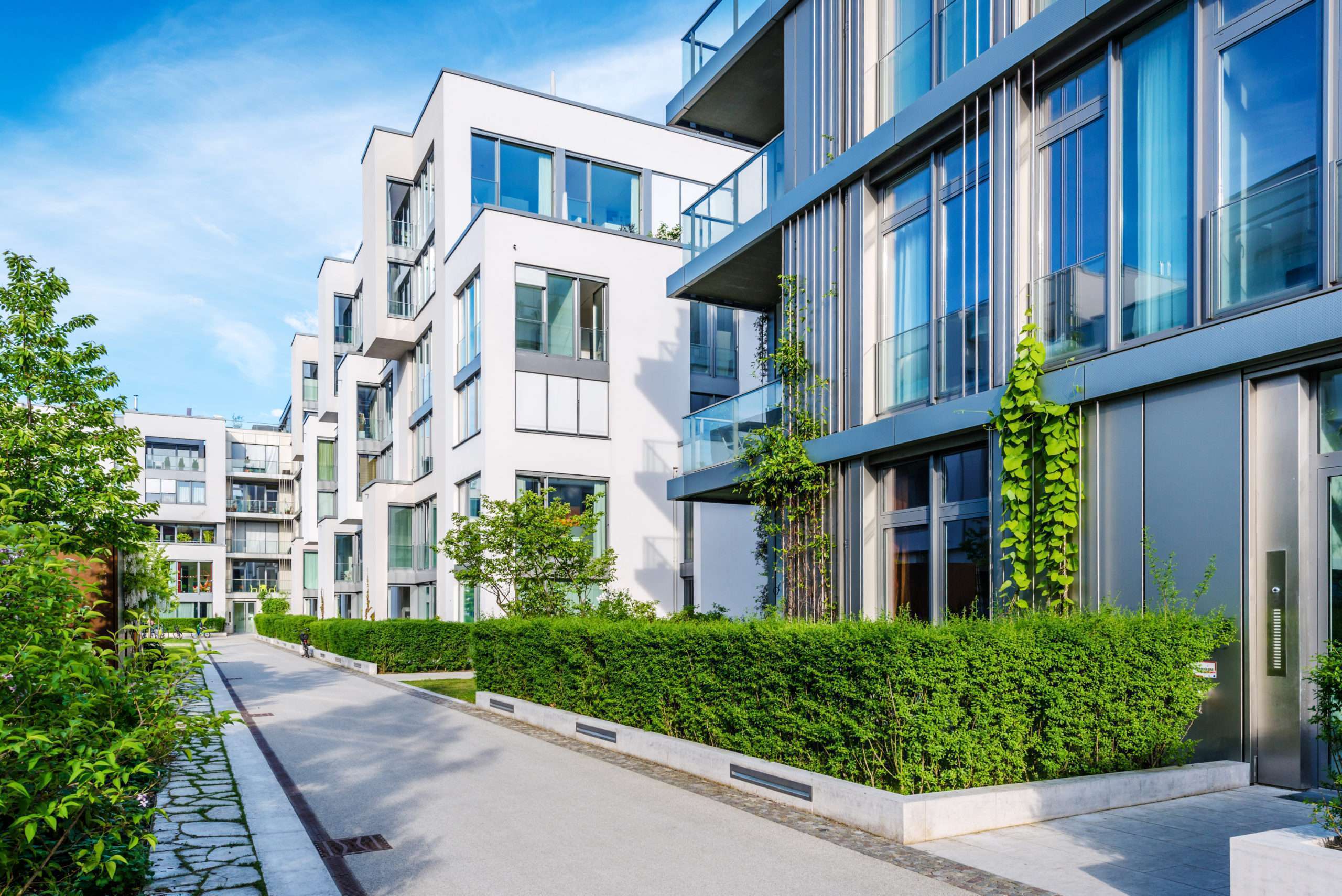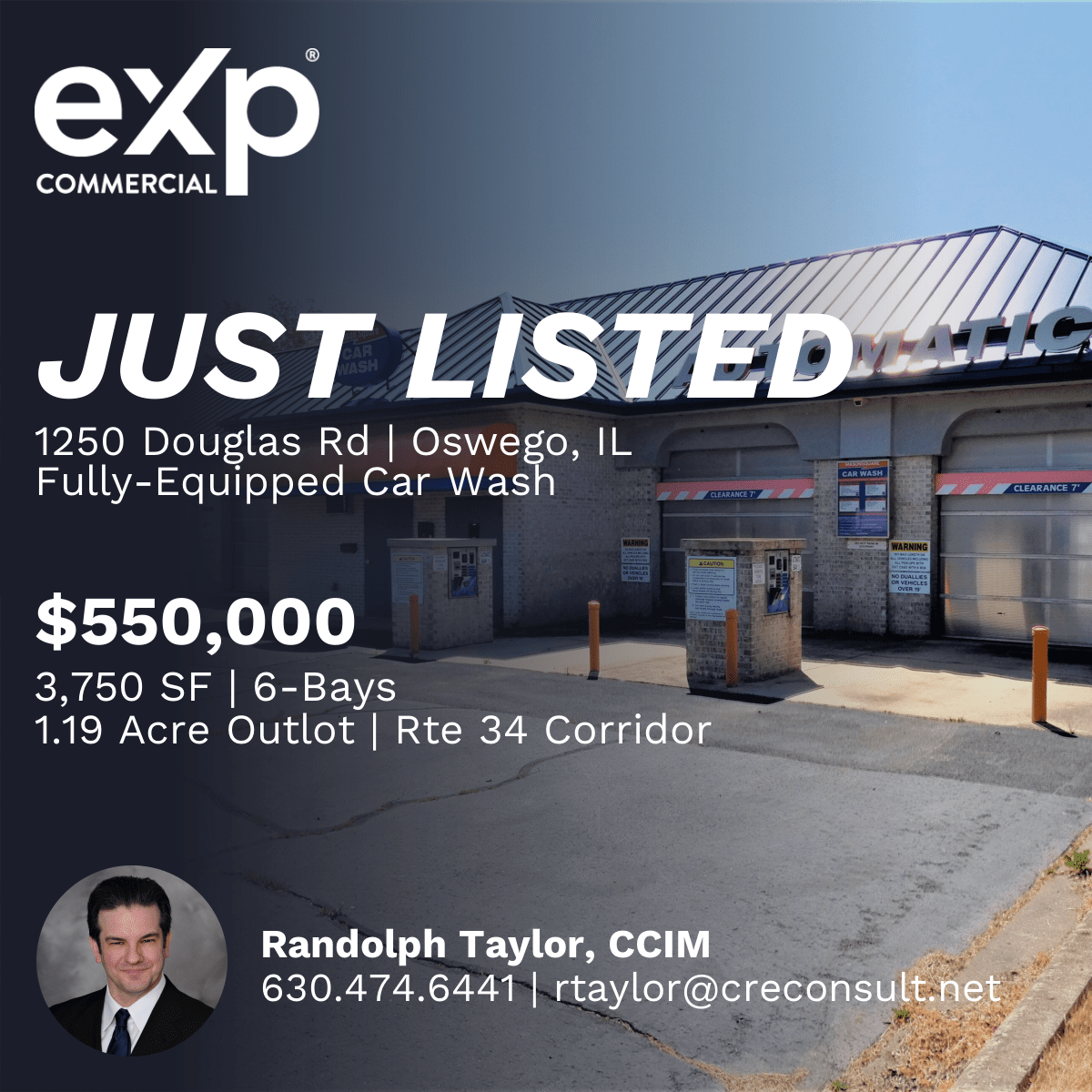
Commercial real estate can be broken down into several different categories. At a high level, when people think of different types of commercial real estate, they typically think about shopping centers, office buildings, or warehouses. But the commercial real estate industry is much more precise when it comes to defining property types. Below is a list of different types of commercial real estate with a description of how each category is typically defined.
Office
Classification. Office buildings are usually loosely grouped into one of three categories: Class A, Class B, or Class C. These classifications are all relative and largely depend on context. Class A buildings are considered the best of the best in terms of construction and location. Class B properties might have high quality construction, but with a less desirable location. And Class C is basically everything else.
Central Business District (CBD). Office buildings located in the central business district are in the heart of a city. In larger cities like Chicago or New York, and in some medium sized cities like Orlando or Jacksonville, these buildings would include highrises found in downtown areas.
Suburban office buildings. This classification of office space generally includes midrise structures of 80,000-400,000 square feet located outside of a city center. Cities will also often have suburban office parks which assemble several different midrise buildings into a campus-like setting.
Industrial
Heavy manufacturing. This category of industrial property is really a special use category that most large manufacturer’s would fall under. These types of properties are heavily customized with machinery for the end user, and usually require substantial renovation to re-purpose for another tenant.
Light Assembly. These structures are much simpler than the above heavy manufacturing properties, and usually can be easily reconfigured. Typical uses include storage, product assembly, and office space.
Flex warehouse. Flex space is industrial property that can be easily converted and normally includes a mix of both industrial and office space.
Bulk Warehouse. These properties are very large, normally in the range of 50,000-1,000,000 square feet. Often these properties are used for regional distribution of products and require easy access by trucks entering and exiting highway systems.
Retail
Strip Center. Strip centers are smaller retail properties that may or may not contain anchor tenants. An anchor tenant is simply a larger retail tenant which usually serves to draw customers into the property. Examples of anchor tenants are Wal-Mart, Publix, or Home Depot. Strip centers typical contain a mix of small retail stores like Chinese restaurants, dry cleaners, nail salons, etc.
Community Retail Center. Community retail centers are normally in the range of 150,000-350,000 square feet. Multiple anchors occupy community centers, such as grocery stores and drug stores. Additionally, it is common to find one or more restaurants located in a community retail center.
Power Center. A power center generally has several smaller, inline retail stores, but is distinguished by the presence of a few major box retailers, such as Wal-Mart, Lowes, Staples, Best Buy, etc. Each big box retailer usually occupies between 30,000-200,000 square feet, and these retail centers typically contain several out parcels.
Regional Mall. Malls range from 400,000-2,000,000 square feet and generally have a handful of anchor tenants such as department stores or big box retailers like Barnes & Noble or Best Buy.
Out parcel. Most larger retail centers contain one or more out parcels, which are parcels of land set aside for individual tenants such as fast-food restaurants or banks.
Multifamily
Garden Apartments. Suburban garden apartments started popping up in the 1960s and 1970s, as young people moved from urban centers to the suburbs. Garden apartments are typically 3-4 stories with 50-400 units, no elevators, and surface parking.
Midrise Apartments. These properties are usually 5-9 stories, with between 30-110 units, and elevator service. These are often constructed in urban infill locations.
Highrise Apartments Highrise apartments are found in larger markets, usually have 100+ units, and are professionally managed.
Hotels
Full service hotels. Full service hotels are usually located in central business districts or tourist areas, and include the big name flags like Four Seasons, Marriott, or Ritz Carlton.
Limited service hotels. Hotels in the limited service category are usually boutique properties. These hotels are smaller and don’t normally provide amenities such as room service, on-site restaurants, or convention space.
Extended stay hotels. These hotels have larger rooms, small kitchens, and are designed for people staying a week or more.
Land
Greenfield Land. Greenfield land refers to undeveloperd land such as a farm or pasture.
Infill Land. Infill land is located in a city has has usually already been developed, but is now vacant.
Brownfield Land. Brownfields are parcels of land previously used for industrial or commercial purposes, but are now available for re-use. These properties are generally environmentally impaired.
Special-Purpose
The above categories of real estate cover the major types of commercial real estate. However, there are plenty of other types of commercial real estate that investors construct and own. Examples of special purpose commercial real estate include self-storage, car washes, theme parks, bowling alleys, marinas, theaters, funeral homes, community centers, nursing homes, and churches.
Source: Types of Commercial Real Estate
https://www.creconsult.net/market-trends/types-of-commercial-real-estate/


